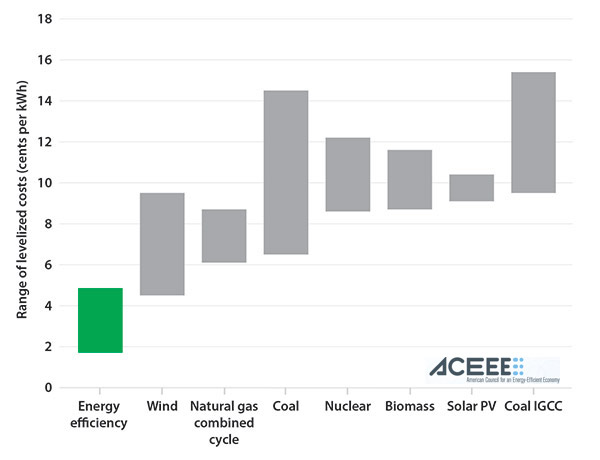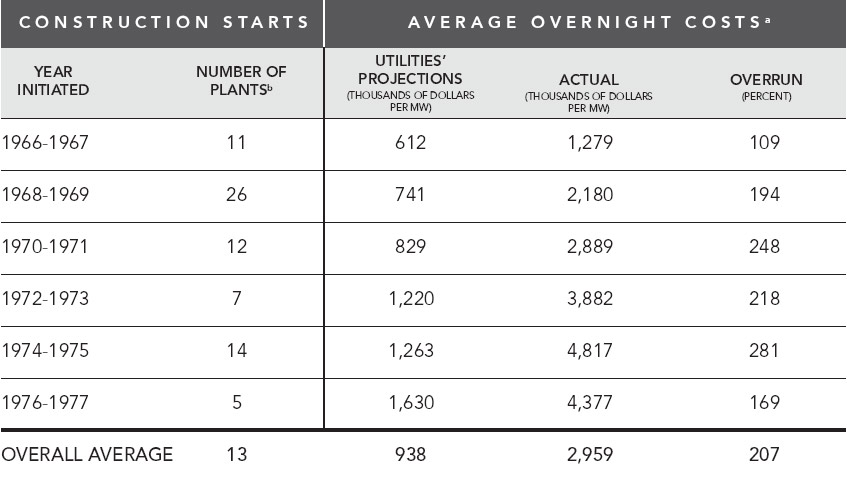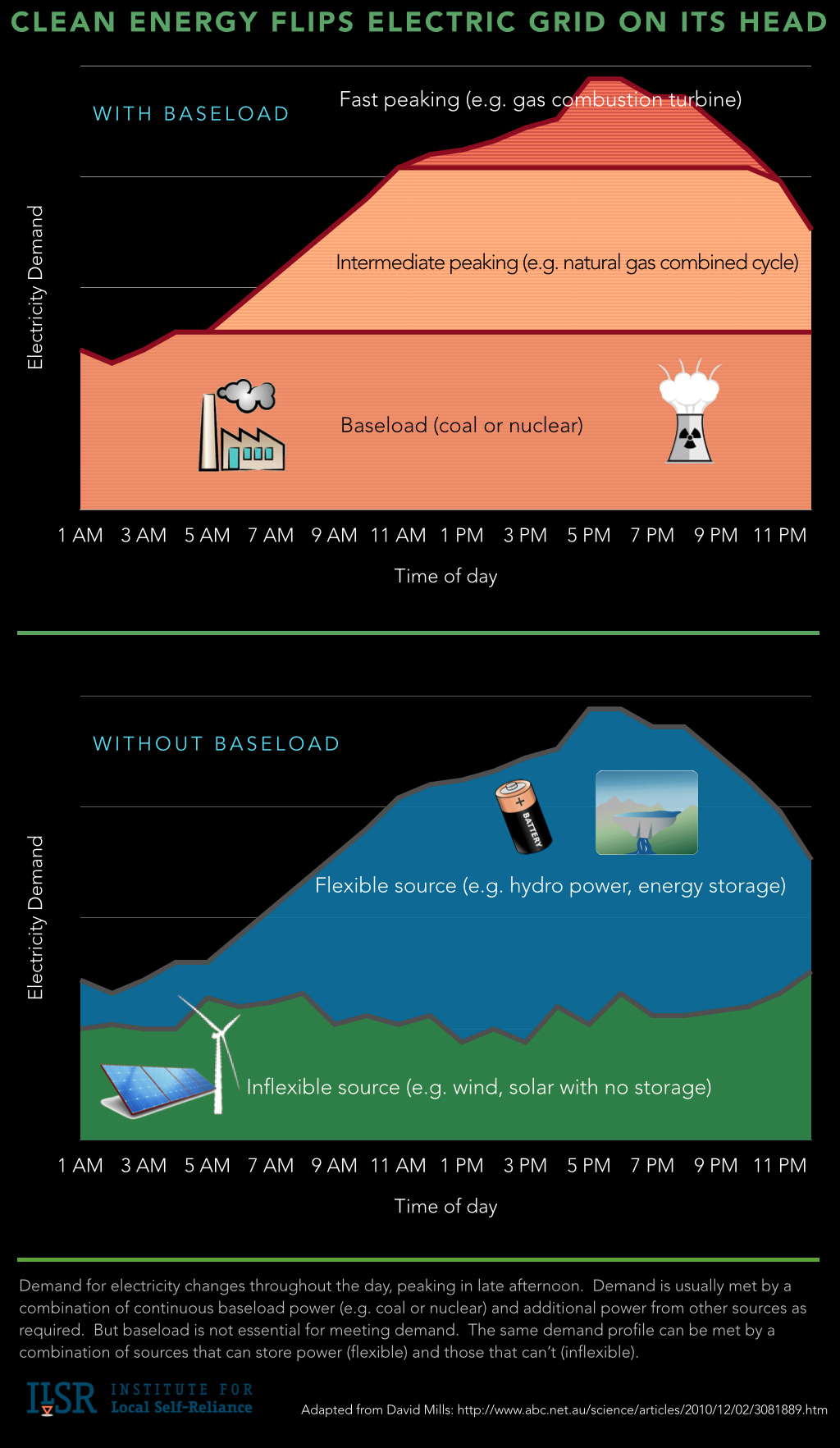Big, Expensive Power Plants Undermine a Clean Energy Future
Originally published on ilsr.org.
 With the rich history of cost overruns in the nuclear industry, Xcel Energy and Minnesota regulators shouldn’t have been surprised when the retrofit cost for the Monticello nuclear power plant ballooned to more than twice the original estimate. Regulators asked tough questions last year about whether the cost overruns were the responsibility of poor management and the definitive answer came back this week: yes.
With the rich history of cost overruns in the nuclear industry, Xcel Energy and Minnesota regulators shouldn’t have been surprised when the retrofit cost for the Monticello nuclear power plant ballooned to more than twice the original estimate. Regulators asked tough questions last year about whether the cost overruns were the responsibility of poor management and the definitive answer came back this week: yes.
This example only reinforces why nuclear power (and other large-scale power generation) isn’t cost-effective or compatible with a clean energy future.
Nuclear is Expensive
The Minnesota nuclear problem actually starts in 2005, when Xcel Energy applied to extend the life of the Monticello power plant beyond its initial 40-year license. The Public Utilities Commission ignored evidence suggesting that the use of a wind and natural gas hybrid system could replace Monticello’s output more cost-effectively than continuing operation of the nuclear plant. Among the data ignored were the potential economic value of community-based wind power, the value of capturing the federal Production Tax Credit for wind energy production, and the high capacity factor of modern wind turbines. (They also ignored an earlier study from the state’s Department of Commerce on the relatively low cost – $6 per customer per year – of closing down the state’s other nuclear plant, Prairie Island).
The massive cost overrun of the Monticello retrofit – $665 million compared to an initial estimate of $320 million – doubles down on the mistake to extend the power plant’s life. Alone, it’s enough money to install over 400 megawatts of new wind power. When coupled with investments in energy efficiency – itself the lowest cost electricity resource – the money spent to extend the life of Xcel’s nuclear reactor could have purchased cleaner and less expensive power from other sources. The following chart illustrates the competitive clean alternatives to extending the life of this nuclear power plant.
Cost of New Electricity Resources (ACEEE)
If you missed it in your first look at the chart above, note that both wind and solar PV are less expensive than cost estimates for new nuclear power plants.
The cost overrun at the Monticello nuclear reactor is part of an ongoing story of nuclear cost explosions. The following chart from the Union of Concerned Scientists shows the sordid history of expensive nuclear power plants.
Cost-splosion: History of Nuclear Plant Cost Overruns (Union of Concerned Scientists)
The story isn’t much better for new reactors added to existing power plants. Georgia Power’s Vogtle expansion, for example, is $900 million (6%) over budget through 2014 (and it just slipped again this week), with the estimated operation date already delayed by nearly two years, until 2018 (plenty of time to balloon the budget!). You’d think the utility learned a lesson when the original project went 1200% percent over budget!
Let’s not forget, either, that nuclear power has some of the largest per kilowatt-hour subsidies of any electricity source.
As the Pittsburgh Post-Gazette said, “a new nuclear project may be the hardest large-scale construction venture to keep on schedule and on budget, because of the cost, the regulations, and the infrequency of such events.” Compare that with solar power, with prices falling 50% in five years and new installations completed every 2.5 minutes.
A Poor Fit for a 21st Century Grid
Nuclear power is an expensive energy source, especially because it’s such a poor fit for a 21st century grid system. In a grid centered on distributed renewable energy resources, the best energy supply is one that is flexible (can rapidly change output to match grid demands). As a “baseload” resource, nuclear is the least flexible electricity supply, with nuclear power plants requiring very stable output around the clock. The following ILSR infographic explains:
Nuclear power plants have some flexibility, but only if they’re already operating at 50-60% of capacity. Below that level, they have to be shut down as renewable energy resources grow.
Nuclear energy had its heyday when advocates believed it would be “too cheap to meter,” but the cost and operational parameters of large-scale power plants do not align with the needs of a modern electricity grid. Maybe the future will look more like the miniaturization of nuclear power in Isaac Asimov’s sci-fi novel Foundation, but until then, using already-available and cost-effective distributed renewable energy makes more sense.
This article originally posted at ilsr.org. For timely updates, follow John Farrell on Twitter or get the Democratic Energy weekly update.
Photo Credit: Tobin, via Flickr (CC BY-SA 2.0 license)
Have a tip for CleanTechnica? Want to advertise? Want to suggest a guest for our CleanTech Talk podcast? Contact us here.
Latest CleanTechnica.TV Video

CleanTechnica uses affiliate links. See our policy here.



